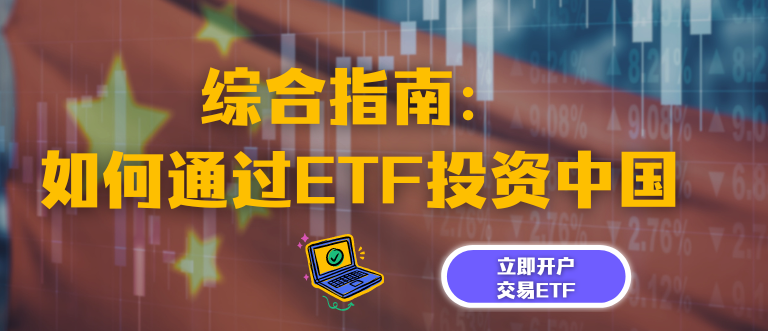Stochastic Oscillator
Table of Contents
Stochastic Oscillator
In the financial markets, investors employ various technical indicators to gain insights into potential market trends and make informed decisions. The Stochastic Oscillator is one such tool that has proven its significance over the years.
The stochastic oscillator is a useful tool for investors trying to make sense of the constantly shifting financial markets. By understanding its components, formula, and historical context, traders can harness its power to identify potential turning points and optimise their investment strategies. The Stochastic Oscillator should be used in conjunction with other tools for a thorough analysis, just like any other technical indicator. It is also important to look at the larger market surroundings. In this article, we will delve into the intricacies of the Stochastic Oscillator, exploring its definition, formula, historical context, and practical application.
What is a Stochastic Oscillator?
The Stochastic Oscillator is a vital tool in financial analysis, providing insights into the momentum and potential turning points of a given asset’s price movement. This oscillator, which George C. Lane created in the late 1950s, helps traders spot possible trend reversals and overvalued or oversold situations by comparing a given closing price to its price range over a given period of time.
Its main objective is determining how an asset’s closing price relates to its range of prices over a certain period. By doing so, investors can identify situations when an asset is overbought or oversold, as well as possible trend reversals. Functioning as a momentum indicator, the Stochastic Oscillator aids traders in assessing the strength and vigour of an asset’s price movement, particularly in relation to recent highs and lows.
Understanding the Stochastic Oscillator
At its core, the Stochastic Oscillator operates on the principle that as an asset’s price approaches its recent high, it tends to close near its peak in an uptrend. Conversely, the closing price tends to approach the recent low in a downtrend. This information is crucial for investors aiming to capitalise on potential turning points in the market.
To maximise its effectiveness, the Stochastic Oscillator is often used in conjunction with other technical indicators and analytical methods, providing a more comprehensive understanding of market dynamics. Whether dealing with stocks, currencies, or commodities, the Stochastic Oscillator’s versatility makes it applicable to various financial markets, enhancing its appeal to investors. Traders must exercise caution in interpreting the oscillator’s signals, as it may generate false positives during trending solid markets, necessitating additional confirmation from other indicators.
Formula for the Stochastic Oscillator
The Stochastic Oscillator is composed of two lines: %K and %D. The %K, representing the current closing price’s relative position within the high-low range over a specified period, is calculated using the following formula:
%K=( Highest High in K Periods−Lowest Low in K Periods /Current Close−Lowest Low in K Periods )×100
This mathematical expression compares the closing price to its price range, emphasising the significance of recent highs and lows in assessing market dynamics. %D, on the other hand, represents a simple moving average of %K over a designated period, offering a smoother line for more nuanced trend analysis. The common choice for the look-back period is 14, but traders can adjust it to suit their preferences and market conditions.
History of the Stochastic Oscillator
George C. Lane introduced the Stochastic Oscillator as a tool to provide a more holistic view of market dynamics. Over the decades, it has evolved into a popular and reliable indicator for traders across different financial markets, offering valuable insights into potential trend reversals and market conditions.
Lane’s inspiration for the Stochastic Oscillator stemmed from his observation that, in an uptrend, closing prices tended to gravitate toward recent highs, while in a downtrend, they approached recent lows. Lane formulated a mathematical model to quantify this phenomenon that compared the current closing price to the high-low range over a specified period, giving birth to the %K line. The subsequent introduction of the %D line, a simple moving average of %K, further refined the indicator’s interpretive capabilities.
The Stochastic Oscillator, a cornerstone of technical analysis in today’s financial markets, has a rich history dating back to the late 1950s. Developed by George C. Lane, an American financial analyst, this powerful momentum indicator was crafted to provide traders with deeper insights into market dynamics.
Over the years, the Stochastic Oscillator has proven its versatility and reliability, evolving into a widely adopted tool for traders. Its ability to highlight potential trend reversals and overbought or oversold conditions has made it an indispensable asset for market participants, contributing significantly to the landscape of technical analysis in global financial markets.
Example of the Stochastic Oscillator
Consider a scenario where an investor is analysing the stock performance using the Stochastic Oscillator. If the oscillator reveals a stock reaching a new high while %K surpasses %D, it signals a potential overbought condition. In this instance, prudent investors may interpret this as an opportunity to sell, anticipating a market correction. Conversely, if the Stochastic Oscillator indicates an oversold condition in a declining market, with %K crossing above %D, it could suggest a potential upward reversal, prompting investors to consider buying opportunities. This example showcases how the Stochastic Oscillator aids in identifying market conditions, assisting investors in making strategic decisions.
Frequently Asked Questions
While both RSI and the Stochastic Oscillator are momentum indicators, they differ in their calculations and interpretations. The Stochastic Oscillator evaluates the correlation between a closing price and its price range over a given period of time. In contrast, the RSI concentrates on the size of recent price moves.
The Stochastic Oscillator, like any tool, has its limitations. It may generate false signals in strongly trending markets and require additional confirmation from other indicators or analysis methods.
Traders typically look for crossovers, overbought or oversold conditions, and divergence between price and the oscillator to interpret the Stochastic Oscillator effectively.
%K on the Stochastic Oscillator represents the current price’s relative position within the high-low range over a specified period, expressed as a percentage.
%D is the simple moving average of %K and provides a smoother line, helping traders identify trends and potential reversal points with greater clarity.
Related Terms
- Adjusted distributed income
- International securities exchanges
- Margin Requirement
- Pledged Asset
- Prepayment risk
- Homemade leverage
- Prime bank investments
- ESG
- Capitulation
- Shareholder service fees
- Insurable Interest
- Minority Interest
- Passive Investing
- Market cycle
- Progressive tax
- Adjusted distributed income
- International securities exchanges
- Margin Requirement
- Pledged Asset
- Prepayment risk
- Homemade leverage
- Prime bank investments
- ESG
- Capitulation
- Shareholder service fees
- Insurable Interest
- Minority Interest
- Passive Investing
- Market cycle
- Progressive tax
- Correlation
- NFT
- Carbon credits
- Hyperinflation
- Hostile takeover
- Travel insurance
- Money market
- Dividend investing
- Digital Assets
- Coupon yield
- Counterparty
- Sharpe ratio
- Alpha and beta
- Investment advisory
- Wealth management
- Variable annuity
- Asset management
- Value of Land
- Investment Policy
- Investment Horizon
- Forward Contracts
- Equity Hedging
- Encumbrance
- Money Market Instruments
- Share Market
- Opening price
- Transfer of Shares
- Alternative investments
- Lumpsum
- Derivatives market
- Operating assets
- Hypothecation
- Accumulated dividend
- Assets under management
- Endowment
- Return on investment
- Investments
- Acceleration clause
- Heat maps
- Lock-in period
- Tranches
- Stock Keeping Unit
- Real Estate Investment Trusts
- Prospectus
- Turnover
- Tangible assets
- Preference Shares
- Open-ended investment company
- Standard deviation
- Independent financial adviser
- ESG investing
- Earnest Money
- Primary market
- Leveraged Loan
- Transferring assets
- Shares
- Fixed annuity
- Underlying asset
- Quick asset
- Portfolio
- Mutual fund
- Xenocurrency
- Bitcoin Mining
- Option contract
- Depreciation
- Inflation
- Cryptocurrency
- Options
- Asset
- Reinvestment option
- Capital appreciation
- Style Box
- Top-down Investing
- Trail commission
- Unit holder
- Yield curve
- Rebalancing
- Vesting
- Private equity
- Bull Market
- Absolute Return
- Leaseback
- Impact investing
- Venture Capital
- Buy limit
- Asset stripper
- Volatility
- Investment objective
- Annuity
- Sustainable investing
- Face-amount certificate
- Lipper ratings
- Investment stewardship
- Average accounting return
- Asset class
- Active management
- Breakpoint
- Expense ratio
- Bear market
- Annualised rate of return
- Hedging
- Equity options
- Dollar-Cost Averaging (DCA)
- Due Diligence
- Contrarian Investor
Most Popular Terms
Other Terms
- Options expiry
- Settlement currency
- Federal funds rate
- Active Tranche
- Convertible Securities
- Synthetic ETF
- Physical ETF
- Initial Public Offering
- Buyback
- Secondary Sharing
- Bookrunner
- Notional amount
- Negative convexity
- Jumbo pools
- Inverse floater
- Forward Swap
- Underwriting risk
- Reinvestment risk
- Final Maturity Date
- Payment Date
- Secondary Market
- Mark-to-market
- Yield Pickup
- Subordinated Debt
- Trailing Stops
- Treasury Stock Method
- Bullet Bonds
- Basket Trade
- Contrarian Strategy
- Exchange Control
- Notional Value
- Relevant Cost
- Dow Theory
- Speculation
- Stub
- Trading Volume
- Going Long
- Pink sheet stocks
- Rand cost averaging
- Sustainable investment
- Stop-limit sell order
- Economic Bubble
- Ask Price
- Constant prepayment rate
- Covenants
- Stock symbol
- Companion tranche
- Synthetic replication
- Bourse
- Beneficiary
Know More about
Tools/Educational Resources
Markets Offered by POEMS
Read the Latest Market Journal

本文旨在为中级外汇交易者提供必要的信息和知识。它将涵盖我们上一篇文章 “五分钟看懂世界上最活跃的市场-外汇差价合约(FX CFD)...

解锁台湾股市的投资潜力!深入了解由强大的技术驱动型经济推动的股票市场,2023 年机械和电气设备将占出口的 69%。在政治稳定、投资者友好的法规和健全的法律框架下,探索台积电和富士康等全球顶级企业。台湾股市值得称赞的历史表现和在国际贸易中的的重要性使其更具吸引力。在这个科技实力雄厚、经济稳定、充满活力的股票市场中,抓住增长机遇!

了解外汇市场 外汇交易市场又称外汇市场,是一个买卖货币的全球性金融市场。它是全世界规模最大、流动性最强的金融市场,每日交易量超过 6 万亿美元。但外汇市场有一个重要却常被忽视的一点,就是它受交易心理的影响。在本文中,我们将探讨外汇市场的复杂性,还有把重点放在交易心理与传统交易策略共同发挥的关键作用...

五分钟看懂世界上最活跃的市场 -外汇差价合约(FX CFD)
外汇交易市场俗称外汇或外汇市场,是全球金融市场的支柱。它是世界上最活跃的市场,2022 年 4 月,全球交易额达到创纪录的每天 7.5 万亿美元[1] 。这个活跃的市场为交易者提供了利用货币价格波动赚取利润的机会。在本文中,我们将解释外汇市场的基本原理,助您了解其投资机制。 什么是外汇? 外汇市场是一个分散的全球市场,世界上所有货币都在这里进行交易...

随着通胀数据趋向 2% 的理想目标,人们普遍乐观地认为,在任何可能的降息之前,市场都不会受到不利影响。以下是美股市场2024年的一些重要事件,投资者在做出投资决策时可以参考留意。

根据《东南亚态势报告:2023》,失业和经济衰退是当前东南亚面临的主要挑战。各国采取了各种政策和措施以恢复经济,尽力摆脱新冠疫情的影响。尽管如此,越南在经济和社会方面展现出了令人满意的复苏迹象,经济增长逐季上升,成为世界经济的亮点之一。虽然全年GDP增速放缓至5.05%,低于政府6.5%的目标,但越南仍然是地区和世界经济增速较快的国家之一。






















